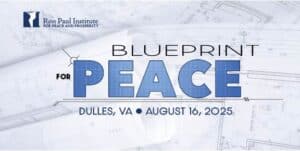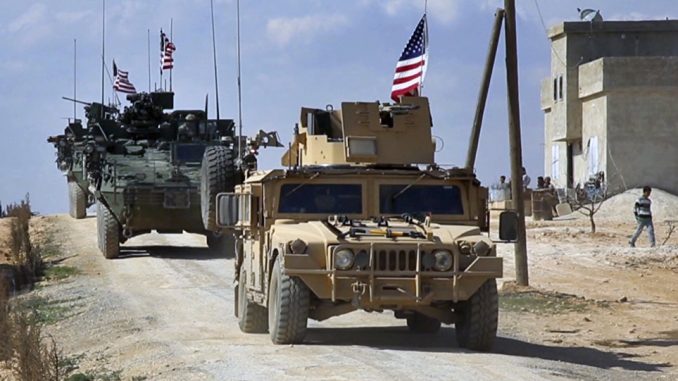President Trump says he has no plans to enter Syria, despite ordering airstrikes on a Syrian military base last week. “We’re not going into Syria”, Trump told Maria Bartiromo during an exclusive interview on FOX Business. “But when I see people using horrible, horrible chemical weapons… and see these beautiful kids that are dead in their father’s arms, or you see kids gasping for life… when you see that, I immediately called General Mattis.”
So, the attack against Syria was an impulsive decision and there is no strategy (not yet) and no longstanding plans! At least, that what we are told. Sounds plausible but there is each and every reason to take this affirmation with a grain of salt. Here is why.
The United States has already entered Syria. Its military is there right now. The US Air Force has recently expanded an air base in northern Syria. The base is near Kobani, which is about 90 miles north of Raqqa, the last urban stronghold for the Islamic State (IS).
It’s not Syria only. After initially reinforcing the residual forces remaining in-country, America’s military presence (Operation Inherent Resolve) was restored in Iraq in the summer of 2014, commencing a campaign, dominated by air and special operations, allegedly targeting the Islamic State (IS) group. In 2016, US military established the Kobani airfield in Syria and also set up an airfield at Qayarrah West in northern Iraq. The Kobani airstrip has been modified to support C-17s, the largest cargo aircraft which need hardened runway to support their weight, and other planes. In March alone, the airfield was used for at least 50 landings by C-17s and more than 100 landings by C-130 military cargo planes.
The United States is assessing another airstrip near the newly retaken Tabqa Dam, north of Raqqa that was taken by the US-backed Syrian Democratic Forces on March 26. The capture of Tabqa airfield about 110 kilometers north of Raqqa would be used in the same way as Qayyarah Airfield West in Iraq is being used for operations to retake Mosul. When finished, Tabka airfield will enable the US to deploy twice as many warplanes and helicopters in Syria as the Russians currently maintain. It is already dubbed “Incirlik 2” or “Qayyarah-2.”
The new base is designed to accommodate the 2,500 US military personnel housed at Incirlik, Turkey. The administration is on the way to pull US air force units out of Turkey, to the five new and expanded air bases in Syria. In 2003, Ankara refused to let the US and its allies use its airspace when the invasion of Iraq started. The decision on airspace was reversed later but the Turkish parliament voted against the use of military bases on Turkish soil. As a result, the US operations in Iraq were significantly hindered. Now the US will not depend on Turkey anymore if Syria’s airspace is open for American flights. This is part of broader plans.
Tabqa is being rebuilt as the US-led coalition has been quietly increasing its aerial capability in northern Syria to include more landing areas and bases. According to the VOA, those bases add to three others already controlled by US allies in the region all situated in the Syrian borderland with Iraq: Syrian Kurds built an airbase last year on farmland known as Abu Hajar airport in the Rmelan area and nearly doubled the length of the runaway to initially allow for delivery of cargo. Two other airfields in the region, one formerly used for agricultural purposes and the other a former Syrian military base, have also been expanded by pro-US Kurdish forces.
Construction of airbases is costly; it’s always done as part of strategy in pursuit of geopolitical goals. Five air bases is a big infrastructure already in place with few mainstream media reports devoted to the issue which is largely kept it out of public light.
Approximately at the time of launching Inherent Resolve, the US added surveillance missions over Syria to clandestine support for specific opposition forces. US military personnel on the ground in Syria became directly involved in hostilities. Since then, the operations of Special Operations Forces (SOF) have intensified and widened in scope. In 2016, the US deployed its special forces in at least seven bases in Northern Syria which are located in Qamishli, Ain Issa, Kobane, Hasaka and Tal Abyadh regions.
The US is preparing for establishment of “safe zones” (zones of stability) or quasi states under its control to be used as springboards for military operations in the Middle East region.
Escalation is considered elsewhere. Another 2,500 paratroopers have been placed at a staging base in Kuwait. The military leaders have petitioned Congress and the White House for more troops, and the White House is considering loosening the rules of engagement in Afghanistan and Somalia. Add to this the reported plans to escalate US military involvement in Yemen.
All told, there is a reason to view the April 7 attack as a new phase in the ongoing war preparations. It does not matter for the US if President Assad holds the reins in Syria or not. The Assads – father and son – have been in power since 1970. The US and the Syria ruled by the Assad family are always at odds. Why is it so important to get rid of the regime now? Alleged chemical attacks and other things are obviously used as a pretext to justify large-scale military presence in the entire region.
The war in Syria has not been provoked by the recent events. It began long before Donald Trump took office. The incumbent president has not done anything new. He just decided to continue what his predecessor started. In general, the US administration is taking over where George W. Bush, Jr, left off. The president, who called for keeping away from foreign conflicts during the election campaign, has shifted his stance from “America First” to “America Omnipresent.”
Reprinted with permission from Strategic Culture Foundation.



